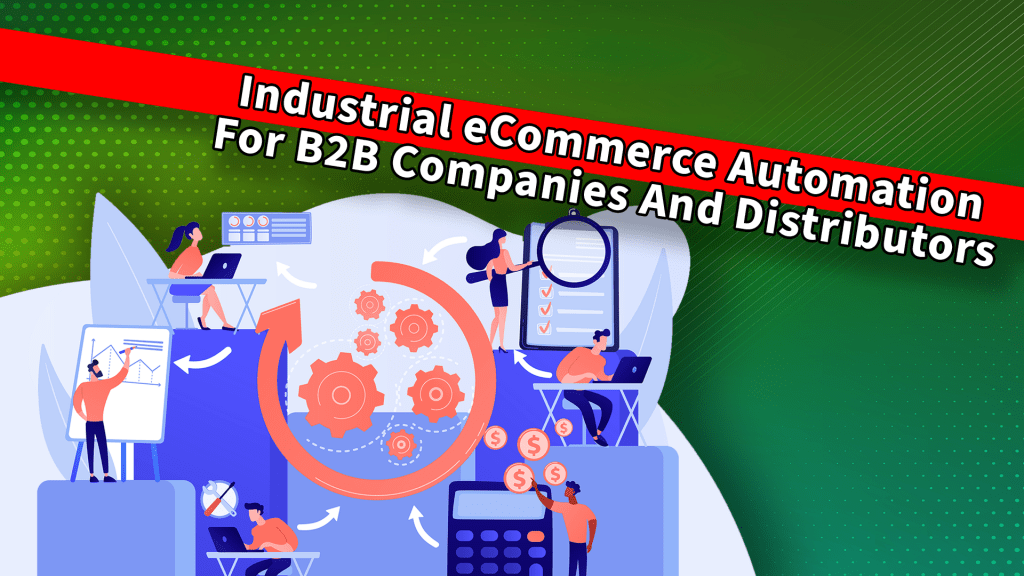In this Surge Session, we talk about the cost of internet marketing. We discuss how much internet marketing costs as well pricing plans for your budget. We also cover the pricing of digital marketing strategies such as social media advertising, SEO, PPC management, and others. Our CEO, Duran Inci, is joined by our Director of Marketing, Joseph Hassun.
We get this question a lot from prospects as well as clients: “How much should I spend on marketing, and what makes sense from an internet marketing standpoint?” So we will be answering that question in today’s discussion.
According to industry professionals, the rule of thumb is you should spend 5% of your total revenue on marketing. However, that has a lot to do with what kind of industry you are in, how aggressive you want to be with marketing, how optimized your sales funnel structure is right now, how optimized is your infrastructure, etc. So, we’re going to go over all of this, and we’re going to review some options based on your revenue and based on what type of sales funnel you have as well.
Let’s talk about the objective first because when it comes to marketing, you can’t just put a price on it right away. You have to look at what your objective is. Is your objective to increase your traffic? Is your objective to increase the number of leads you get? Or is it to sell more products? So, the first thing you need to look at is what your objective is and also what kind of sales funnel you want to build based on that objective.
We have different types of clients that we work with. We work with both small-sized businesses and medium-sized businesses. We also work with some Fortune 100 companies as well. So, how do these companies handle their marketing budgets? What is their answer to “How much money should I spend on marketing?”?
The very first thing we do, of course, is look at their annual online revenue. We break them up into three different sections, those individuals whose companies do less than one million, those whose companies make one to five million, and then those that make five million-plus. That’s what kind of gives us an initial breakdown and helps us differentiate the company.
However, when it comes to how much they should be spending based on what their objective is or what they’re trying to do, there are other things to look at. You need to look at the competition. If the competition is out there and it’s fierce, you might not be able to get away with only spending 5% on marketing. You might need to increase that budget to compete with what is currently out there. It has to do with profit margins, how aggressive you want to be, what the market cap is in your industry or in your offering of products. As we said, there are many different factors.
If you generate less than $1 million of revenue, you’re a small business and you can’t spend tens of thousands of dollars on marketing on a monthly basis. If you are doing a million dollars or less, you should be spending 5% of your revenue on marketing because the digital space right now is very competitive and very saturated.
Let’s look at medium- to large-sized businesses. If you’re doing between $1 and $5 million, obviously, you’ll have more money than a small-sized business. However, if you’re an eCommerce business, you’re going to spend a little more.
We speak to a lot of small businesses that do around $1 million. Unfortunately, we find out some of these clients that come to us are spending $400 a month on SEO (Search Engine Optimization). Anybody that’s charging you $500 or $400 a month on SEO is not doing much at all. They’re not generating content; they just have you on automated software. They’re submitting these directories that they have and they’re just trying to do generic stuff.
Now, let’s discuss the different businesses that do internet marketing. There are basically three different types: 1) a service provider trying to generate leads, 2) a brick-and-mortar trying to generate more foot traffic, or 3) an eCommerce site trying to generate more sales online.
Lead generation is any time you’re trying to start a conversation with a prospect. You could be a plastic surgeon, you could be an attorney, you could be a doctor, you could be a beauty center, a spa, etc, but if you are providing a service, you need to be generating leads one way or another.
About 70% of the clients we deal with are eCommerce customers and 30% are usually lead generation.
Now, if you’re an eCommerce company, you need to consider several factors when it comes to your infrastructure because the infrastructure that you have on your website will actually determine how much money you should spend, or how much money you are going to waste on marketing.
Make sure you are on a proper website platform. Sites like Wix or Squarespace don’t allow you to set up a proper CRM. It’s hard to integrate an existing CRM or to integrate any other tools for that matter. So, getting onto a new CMS or onto a WordPress will allow you to integrate all of these things that will make up your marketing funnel.
These prehistoric platforms, unfortunately, just either don’t have the necessary ability to be effective or are a nightmare to try to work on.
So, if you are on an ancient installation of Magento or if you have a pure HTML site from 1999, you are actually going to spend more money on marketing. It’s going to take the marketing company, or your marketing staff, a longer time to update the website, edit the website, add content to the website, work on conversion elements, etc. That’s the difficulty with infrastructure and that’s going to determine the cost.
If we have a prospect that comes to us and is on an ancient Wix site or some kind of Squarespace, the first thing we’ll say is “We need to migrate you to WordPress.” We won’t even work with them if they don’t migrate to WordPress.
Once you have the right infrastructure, what you need to look at is what kind of service you’re looking for. Search engine optimization is at the top of our list because it will give you the most return on your investment in the intermediate to the long-term. SEO is not a short-term strategy. Unless you have done nothing on your domain and there’s some magical opportunity that’s waiting for you, this is your top priority.
For SEO, if you are a local business, you should not be paying less than $1,500 a month. Within that $1,500, the marketing company should create and publish some weekly content, optimize your pages, optimize your structure, as well as include some level of backlinking. Backlinking is authority that you are able to push back to your site.
Typically, whenever you have these agencies offering SEO services for $300 a month, they’re offering the same service to hundreds of different clients, so, essentially, you are a number. They just have automated software that’s running. There is no personalized approach, there’s no detailed approach that’s specific to your business and to your needs.
At the end of the day, paying that additional money is what’s going to give you that tailored marketing strategy that’s actually going to show growth.
If it’s too good to be true, it ain’t true. If you look at this from a cost standpoint, you’re going to lose. If the marketer or if the consultant is not asking you questions such as what’s your revenue?, what’s your top service?, what’s your gross profit margin?, how could I generate money for you in the next 30 days?, then it’s not going to work out. Again, this is for small businesses that are doing around a million dollars.
Now, if you’re doing between $1 million and $5 million, you should be spending at least $5,000 a month on SEO. The reason being, no matter what your industry is, you have to do more content, more quality content, and get more backlinks. You have to possibly get on weekly or monthly calls with your marketing company. You have to set goals and KPIs. You have to make sure that they have a plan that focuses on your bottom line and that they mention terms like ROI (return on your investment).
At Optimum7, we like to tell our clients how many cents they spent to make a dollar, and only when we do that do we have clients.
If you are doing anything more than $5 million, then you should be spending around $10-15,000 a month on SEO. Those are the metrics. If you are spending less than that, then you’re not really getting the results you need from it. Again, it goes back to infrastructure, and that goes back to what kind of business you are and what kind of objectives you have.
Now, let’s talk about paid search. With Google Ads, with PPC (pay-per-click), you have different costs. You have the setup of your PPC campaigns, you have the actual ad spend that you’re paying to Google, and then you have the management of it, the team that’s going to be managing it on a daily, weekly, and monthly basis. So, there are multiple costs involved when it comes to PPC.
Essentially, with PPC, what you put in is what you’re going to get out, and your budget really has to do with the competition that’s out there. If you can get to the number one spot with a low bid, that’s great. But as more competition gets out there, you’re going to have to increase that ad spend over time to stay on the top spot.
So, in terms of the setup, your campaign needs to be set up regardless of it being an AdWords campaign or a Facebook paid search campaign. You need to know what audience you’re going to go after, what your demographic is, what your keywords that you want to be bid on, and what kind of retargeting objectives you have, which all goes back to your sales funnel.
With paid search, the setup can cost anywhere from $2,000 to $20,000. You can’t really have a number, but we’d say an average of $5,000. Then, there is the budget you pay to Google to actually display the ads or to Facebook, so that budget is going to be determined on your goals and what you want your CPA (cost-per-acquisition) to be. You have to be able to do this kind of math to determine your budget
So, you have the setup that you pay to the marketing company, you have the budget that you pay to Google or Facebook or wherever you are doing those display ads, and then you have to pay the marketing company.
When it comes to paid search, the percentage is usually anywhere from 10% to 30% of your ad spend so that the team that is managing the campaign can look at it on a weekly, daily, monthly basis. That percentage depends on how much attention they need to pay to your account and how competitive your market is.
The last topic is lead generation. You can perform lead generation in several different ways. You can do lead generation on LinkedIn or what’s called email lockage. But what we try to do here is we try to price it on a per-lead basis. If you come to us and you say, “Here is my demographic and I want a hundred leads per month. How much is this going to cost me?” then we will create a campaign and we’ll do it based on that.
Now, what’s the difference between paying for a monthly service expecting results and paying for leads? The difference is a monthly SEO strategy is a more thought-out detailed plan that has a lot of moving parts and it’s made for the long run. It’s kind of a marathon approach to try to build up your brand, increase awareness and overall generate sales over time. However, a pay-per-lead strategy is more of a short-term strategy where you’re just trying to generate as many sales and as many leads as possible in a short amount of time.
Strategies like an SEO strategy, or a long-term paid search strategy, are marathons. If you’re just doing pay-per-lead, you’re really going after a sprint. That’s the difference between the two.
To recap all of this, if you are paying less than a thousand dollars a month for any kind of marketing initiative, you are wasting your money. You’re not getting the results you need from it.
What we recommend you do is invest in your brand, invest in your business. Do a marketing strategy. Think about it, and plan it for the long-term. Don’t just say, “Hey, I need some business next month.” It needs to be a planned-out strategy, and that’s exactly what a marketing agency, like us, can do for you. Of course, if you have any questions, please email or contact us.
Want to learn more about how to create a pricing plan for your budget? Need help increasing the efficiency and effectiveness of your current digital marketing strategies?
Contact us. We’re here to help.





